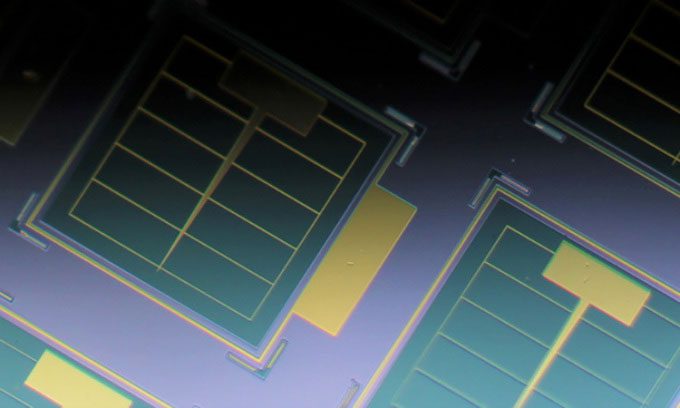New Solar Panels Feature Ultra-Thin Light Absorbing Material, Radiation Resistant, Potential Applications for Satellites and Spacecraft.
Scientists at the University of Cambridge (UK) have developed radiation-resistant solar panels using an ultra-thin light-absorbing material. The new research was published in the journal Applied Physics on November 8.

The solar panels (green square) contain an ultra-thin layer of GaAs light-absorbing material. (Photo: Armin Barthel)
The deployment of satellites in medium Earth orbits is becoming increasingly important as low Earth orbit becomes more crowded and congested. However, the proton radiation belt surrounding Earth requires solar panels to withstand radiation. Additionally, research on distant planets and moons will also necessitate this type of solar panel.
In the new study, the team of experts used gallium arsenide (GaAs) semiconductor to fabricate the solar panels. The panels consist of an ultra-thin layer of GaAs that absorbs light, which is key to their radiation resistance. According to the research team, the surface of each solar cell is only 120 nanometers thick, equivalent to 1/1,000 the thickness of a human hair.
During testing, to simulate the effects of radiation in space, the experts used protons generated at the Dalton Cumbrian Nuclear Facility (UK) to bombard the new solar panels. The performance of the panels before and after irradiation was studied using cathodoluminescence techniques. In a second series of tests, the experts used a Compact Solar Simulator to determine how effectively the panels converted sunlight into electricity after being bombarded by protons.
“Our ultra-thin solar panels perform better than previously studied thicker devices under proton radiation at a certain threshold,” said Armin Barthel, a researcher at the University of Cambridge. The efficiency of the ultra-thin panels increases because the charge carriers exist long enough to move between the start and end points within the device.
Compared to thicker panels, the ultra-thin solar panels require nearly 3.5 times less glass cover to produce the same amount of electricity over 20 years of operation. This will help make satellites lighter and significantly reduce launch costs.




















































